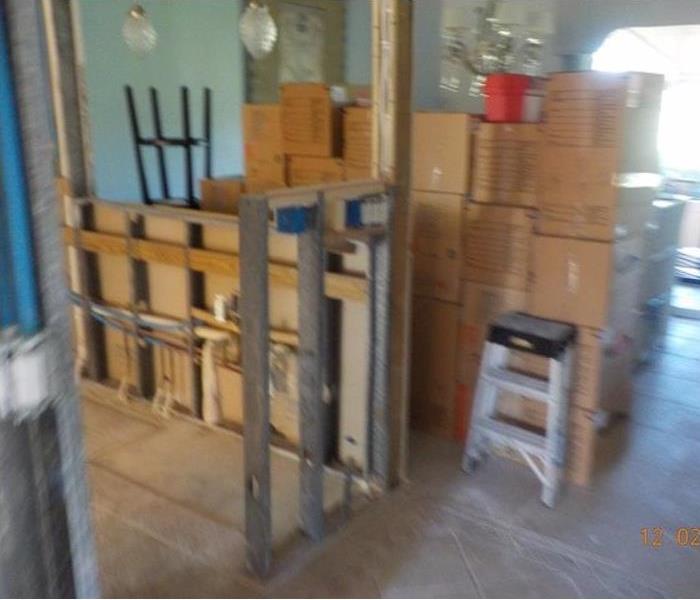Methods of Contents Restoration After Water Damage
7/6/2021 (Permalink)
 The process of water restoration ensures that your home returns to a livable and pre-damaged condition.
The process of water restoration ensures that your home returns to a livable and pre-damaged condition.
After water damage, some of the items in your home may never be the same. Luckily, there are many types of contents restoration that can be completed after water damage to remove excess liquid and recover some of your items. The process of water restoration ensures that your home returns to a livable and pre-damaged condition.
What is Contents Restoration?
Contents restoration is used to restore your salvageable items after water damage. Some of these technologies are so advanced that they can save items like textiles, clothes, hard goods, photos, and electronics that was previously not possible. While not every item can be saved, in the hands of a professional you have a large chance of your items returning to the condition they were in before.
Types of Contents Restoration
Unfortunately, there is more to the content restoration process than just letting your items dry. There are several methods of cleaning to restore your household items. Depending on the type of material and the level of water damage, the content restoration methods differ. Some of the most common strategies include:
Dry Cleaning
After inspecting the area, dry cleaning is often used as a precursor to wet cleaning. Additionally, it is used to clean light residues.
Wet Cleaning
Wet cleaning is using a liquid solution to remove moderate to heavy residues from the surfaces.
Spray and Wipe
For items that can’t handle wet cleaning, the spray and wipe method is used to disinfect surfaces.
Foam Cleaning
Commonly used for upholstery fabrics that be ruined from a wet method of cleaning, foam cleaning can prevent the shrinking or bleeding of these items. The foam can help extract the orders and contaminates out of any porous surfaces.
Abrasive Cleaning
Abrasive cleaning involves physically abrading the surface, which involving scraping or wearing away the exterior through the process of friction or erosion. When needed, certain materials, such as sand, are used to agitate the surface being cleaned and remove dirt accumulation, stains, and other hard to treat problems.
Immersion Cleaning
For deep sanitation, the contents are dipped into a bath of the cleaning product until they are usable once again.
After extreme water damage in your home, it is best to let professionals clean and restore your property to ensure the highest quality of sanitation and care.
The team at SERVPRO always works by the motto “restore versus replace” to help save money and preserve as many of your items and personal keepsakes as possible!

 24/7 Emergency Service
24/7 Emergency Service